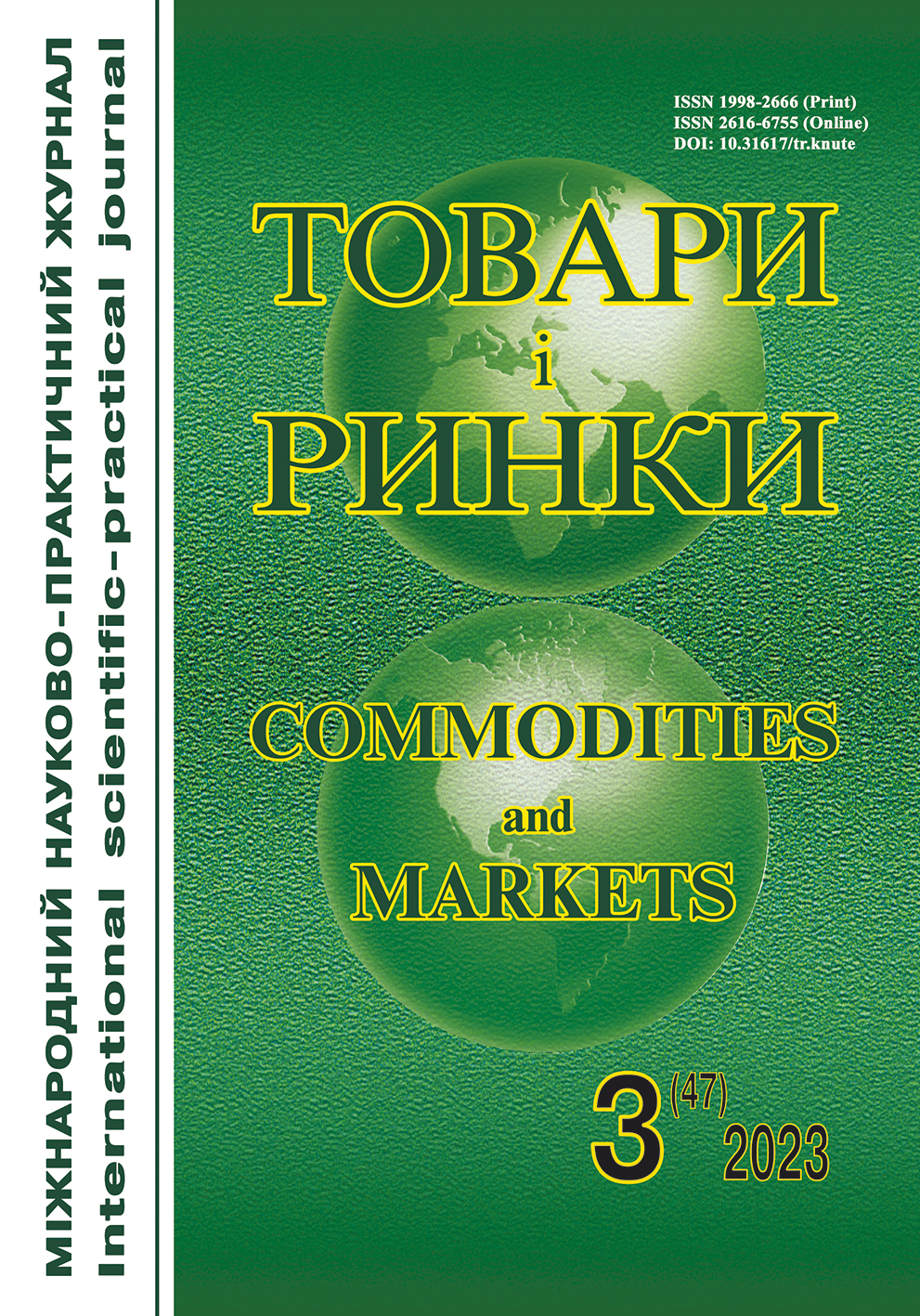А systematic approach to the prediction of properties textile products
DOI:
https://doi.org/10.31617/2.2023(47)07Keywords:
systematic approach, textile products, product properties, raw materials, yarns, textile products.Abstract
One of the most promising areas for expanding the range and improving the quality of textile products is the application of a systematic approach to predicting their properties. The systematic approach takes into account the interconnection of operations throughout the entire chain of the textile manufacturing process, so its application is appropriate and relevant.
The systematic approach is a set of methods and the appropriate sequence of their application, which provides a comprehensive view of a particular problem and directions for its solution. It is typically applied to all technological systems that are of an orderly nature.
Technological processes in the textile and light industry are sequential chains of certain operations that are interconnected and allow you to get the final product in accordance with the technical specifications. Each technological operation requires compliance with the requirements for equipment and personnel qualifications, which affects the quality of the semi-finished product and the finished product as a whole.
The aim of the study is to analyse the application of a systematic approach to predicting the properties of textile products, improving their quality and expanding their range.
The systematic methodology consists of a set of methods and a certain sequence of their application. It provides a comprehensive view of the goal and ways to achieve it.
An in-depth analysis of existing systematic approaches in some industries has been conducted.
To predict the properties and quality of textile products, it is advisable to apply a systematic approach that allows to identify the elements of the system, their grouping into subsystems and the relationships between them and to guarantee their rationality. The properties of finished products are directly influenced by the properties of the derivative raw materials, the state of technological equipment and the level of qualification of production and management personnel.
The following articles will highlight further research in the application of a systematic approach to predicting product properties at Ukrainian textile and light industry enterprises, which will allow us to build a mathematical model and a general algorithm for predicting product properties and managing their quality.
References
Onyshchenko, Ya. D., & Zamulko, A. I. (2020). The system approach in energy management as an analytical tool for evaluating energy-intensive processes at the food industry enterprises of Ukraine. Scientific works of the NUFT, 26(2), 131-139. http://dspace.nuft.edu.ua/jspui/handle/123456789/32148 , https://doi.org/10.24263/2225-2924-2020-26-2-13
Pidgorny, M., & Rahimi, Ya. (2021). Systematic approach to building information technology to improve the efficiency of the supply chain. Management, navigation and communication systems, 2(64), 89-91. PNTU. https://doi.org/10.26906/SUNZ.2021.2.089
Diubanov, O. O. (2017). Systematic approach to the regulation of problematic processes of auto-technical support of the Ground Forces of the Armed Forces of Ukraine. Collection of scientific works of the center for military and strategic research of the National University of Defense of Ukraine, 3(61), 119-125. https://doi.org/10.33099/2304-2745/2017-3-61/119-125
Kyrychenko, O. (2022). Modern aspects and technologies of managing the development of enterprises. Scientific notes of the "KROK" University, 2(66), 107-115. https://doi.org/10.31732/2663-2209-2022-66-107-115
Bidiuk, P. I. (2003). A systematic approach to fore-casting based on time series models. System research and information technologies, (3), 88-110. http://dspace.nbuv.gov.ua/bitstream/handle/123456789/50316/08-Bidyuk.pdf?sequence=1
Shubenkova, I. A., Petrova, S. K., & Bidiuk, P. I. (2017). A systematic approach to modeling and forecasting based on regression models and the Kalman filter. System studies and information technologies, (2), 52-61. https://doi.org/10.20535/SRIT.2308-8893.2017.2.05
Varenko, V. (2019). Methods of system analysis in analytics. Bulletin of the Book Chamber, (10), 43-47. https://doi.org/10.36273/2076-9555.2019.10(279).43-47
Tsurkan, O. V. (2021). A systematic approach to studying the technology of post-harvest processing of pumpkin seeds. Technology, energy, transport of agricultural industry, 4(115), 141-147. http://repository.vsau.org/card.php?lang=en&id=31090, https://doi.org/10.37128/2520-6168-2021-4-16
Perevozova, I. V., Mainka, M. K., & Orlova, O. I. (2021). Application of the system-functional approach in the management of innovative development of construction enterprises. Economics and enterprise management, 32(71), 3, 49-54. https://doi.org/10.32838/2523-4803/71-3-8
Shostakovska, A. V. (2017). A systematic approach to quality control of industrial enterprise development. Economy and business management, (24), 173-177. http://bses.in.ua/journals/2017/24_2017/37.pdf
Linnik, M. K., Volskyi, V. A., & Kotsiubanskyi, R. V. (2019). A systematic approach to justifying the technological scheme and structure of a combined machine for processing corn stubble. Herald of Agrarian Science of the Black Sea Region, (4), 99-105. https://doi.org/10.31521/2313-092X/2019-4(104)
Jones, H. (1975). A systematic approach to techno-logical forecasting. R & D Management, 6(1), 23-30. https://doi.org/10.1111/j.1467-9310.1975.tb01079.x
Kucharavya, D., Damand, D., & Barth, M. (2023). Technological forecasting using mixed methods approach. International Journal of Production Research, 61(16), 5411-5435. https://doi.org/10.1080/00207543.2022.2102447
Simon, P. (2013). Emerging Requirements for Technology Management: A Sector-based Scenario Planning Approach. Journal of Technology Management & Innovation, 8(3), 34-44. https://doi.org/10.4067/S0718-27242013000400004
Saraji, M. K., & Sharifabadi, A. M. (2017). Appli-cation of System Dynamics in Forecasting: A Systematic Review. International Journal of Manage-ment, Accounting and Economics, 4(12), 1192-1205. https://www.ijmae.com/article_115223_7c5b08ee97742e06b535d4edbe9ec048.pdf
Feng, L., Wang, Q., Wang, J., & Lin, K.-Y. A. (2022). Review of Technological Forecasting from the Perspective of Complex Systems. Entropy, 24(6), 787. https://doi.org/10.3390/e24060787
Pietrobelli, C., & Puppato, F. (2015). Technological Forecasting & Social Change. Technology foresight and industrial strategy. Technol. Forecast. Soc. Change, 117-125. https://doi.org/10.1016/j.techfore.2015.10.021
Sonwane, S., Bobde, S, Kale, B., & Mahatme, C. (2018). Technology Forecasting: A Tool for Prioritizing R & D. International Journal of Advanced Research in Basic Engineering Sciences and Technology (IJARBEST), 4(5), 48-57. https://www.ijarbest.com/journal/v4i5/1647
Slizkov, A. M., Shcherban, V. V., Krasnytskyi, S. M., & Demkivska, T. I. (2013). Prediction of physical and mechanical properties of textile materials for household use. KNUTD. https://er.knutd.edu.ua/bitstream/123456789/12309/2/Prohnozuvannia_Mono.pdf
Slizkov, A. M. (2010). Scientific basis of forecasting the properties of textile materials. Bulettin of KNUTD, 1(5), 111-120. https://er.knutd.edu.ua/bitstream/123456789/5661/1/Bul2010_N5T1_P111-120.pdf




